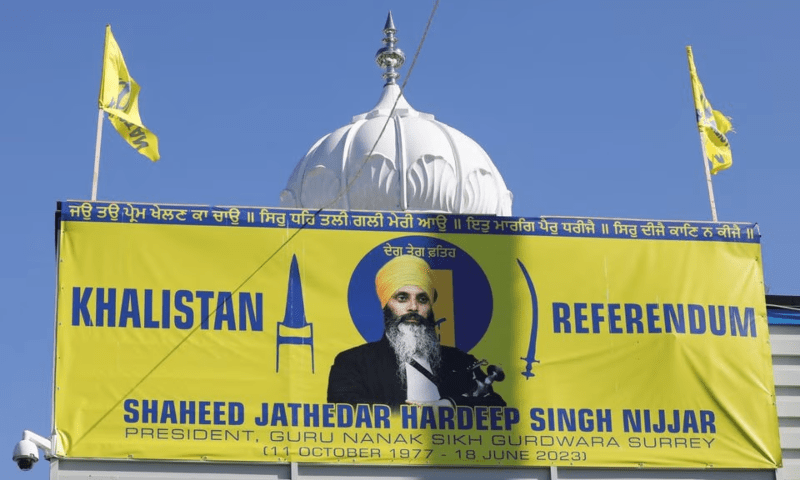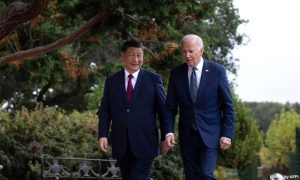An ancient fable describes a wolf that is unable to catch a sheep and is really frustrated by its inability. Wolf then disguises itself in a sheep’s clothing to trick and attack one. Similarly, India’s approach at the SCO Summit in Islamabad mirrored the same trick. Indian External Affairs Minister S. Jaishankar’s recent remarks at the SCO summit highlighted “Terrorism, Extremism, and Separatism” as the ‘Three Evils’. However, India’s own history raises questions about this narrative. India’s actions in Gujrat 2002, IIOJK and Manipur unveil a troubling pattern of state sponsored violence and discrimination. Khalistan movement further contextualizes the tensions within India. Each region reflects the state’s approach to separatism, communal tensions, and violence against minority communities.
Who can forget the barbarianism of Current Prime Minister of India who was then the Chief Minister of Gujrat. The riots of 2002 in Gujrat serve as a stark reminder of state complicity in communal violence. Over 1,000 Muslims were killed during the riots, which many believe were exacerbated by the state government led by Narendra Modi. Reports indicate that police were instructed to allow the violence to unfold, targeting Muslim owned properties specifically. The aftermath of these riots entrenched communal divisions and fostered an environment of distress. The scars from such events contribute to a narrative where minority communities feel marginalized and oppressed.

In IIOJK, the Indian government has employed extreme measures since the revocation of Article 370 in August 2019. This move stripped the region of its special status, leading to heightened military presence and widespread human rights abuses. The region is often described as the “most militarized zone” globally, with reports of extrajudicial killings, enforced disappearances, and severe restrictions on civil liberties. The Armed Forces Special Powers Act (AFSPA) allows security forces to operate with impunity, further aimed to suppress the dissent sentiment and paving way for brutal inhuman activities.
In Manipur, recent inter-ethnic violence primarily between the Meitei and Kuki communities has resulted in significant casualties and displacement. The government’s response has mirrored past strategies used in IIOJK—imposing curfews, suspending internet services, and deploying troops with shoot-on-sight orders. The conflict was ignited by a court ruling concerning Scheduled Tribe status for the Meitei community, which many feared would ignite existing ethnic tensions. The central government’s perceived bias towards the Meitei community has further alienated the Kuki population, fueling grievances that echo those seen in Gujrat and in IIOJK.
Assassination of Hardeep Singh Nijjar in Canada
The Khalistan movement arose in the late 1970s and peaked in the 1980s, fueled by perceptions of oppression and marginalization among Sikhs. The violent repression during this period, particularly the Operation Blue Star in 1984 at the Golden Temple, left deep scars within the Sikh community. This operation not only intensified calls for Khalistan but also contributed to a cycle of violence that resonates with current events in IIOJK and Manipur. This movement has gained renewed attention following the assassination of Hardeep Singh Nijjar in Canada. Nijjar was a prominent proponent of Khalistan and leader of the Khalistan Tiger Force. His killing has sparked significant diplomatic tensions between Canada and India, with Canadian Prime Minister Justin Trudeau alleging Indian government involvement.
In all three cases—Gujrat, IIOJK and Manipur, the Indian state has employed heavy handed tactics to quell dissent. In IIOJK and Manipur, it used draconian laws like AFSPA, while Gujrat’s riots reveal a failure of state protection for minority communities. The Khalistan movement similarly faced brutal crackdowns that further alienated Sikhs. The actions taken against these groups reflect a broader Hindutva ideology that prioritizes Hindu nationalism over minority rights. This ideology has led to systemic discrimination against minorities across India, as evidenced by biased resource allocation in Manipur that favors the Meitei community over Kukis. Similarly, Gujrat’s riots can be seen as a manifestation of this majoritarian ideology. This fuels fears among Sikhs also that their identity is under threat.

Human rights organizations have condemned India’s actions across these regions for violating fundamental rights. In IIOJK, reports detail torture and extrajudicial killings. In Gujrat, survivors of the riots continue to face discrimination whereas in Manipur, internet shutdowns have curtailed freedom of expression during ongoing violence.
India’s actions in Gujrat, IIOJK and Manipur reveal a troubling pattern of state-sponsored violence that disproportionately affects minority communities. While each situation has unique contextual factors, they share commonalities in terms of state repression, ideological extremism, and human rights violations.
India’s dubious narrative at the SCO Summit aimed to picture herself as a victim of the Three evils whereas the ground realities reveal a troubling hypocrisy. The actions of Indian government heavily contradict with the cunning lecture of Jaishankar at SCO. India is indeed a wolf in sheep’s clothing!























